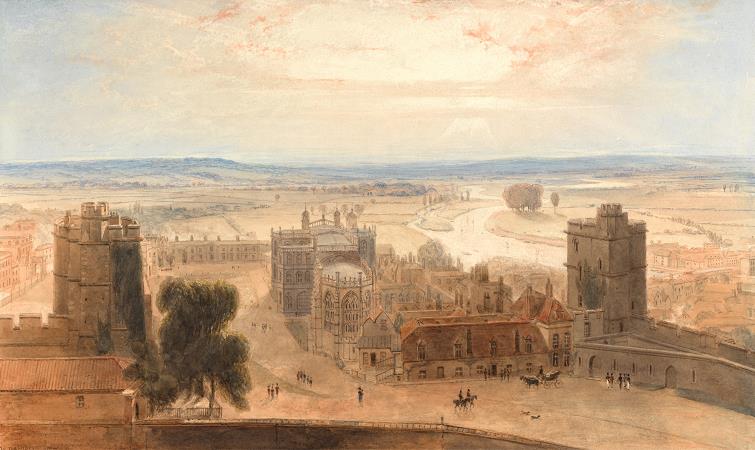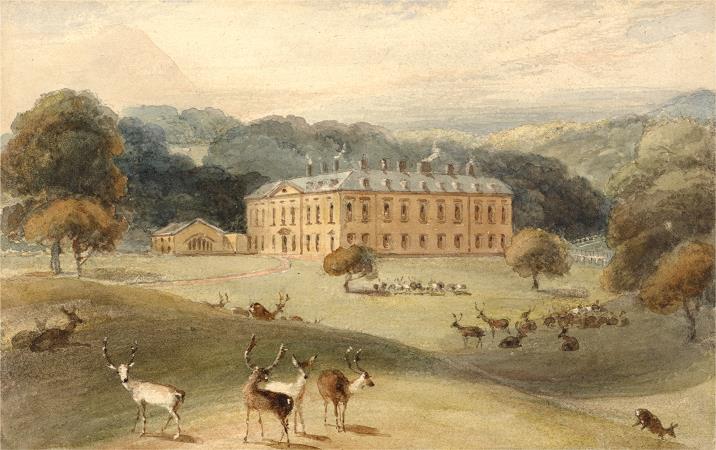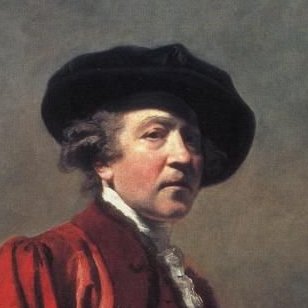William Daniell (1769 - 1837). William Daniell was an English landscape and marine painter, and printmaker, notable for his work in aquatint. He travelled extensively in India in the company of his uncle Thomas Daniell, with whom he collaborated on one of the finest illustrated works of the period-Oriental Scenery. He later travelled around the coastline of Britain to paint watercolours for the equally ambitious book A Voyage Round Great Britain. His work was exhibited at the Royal Academy and the British Institution and he became a Royal Academician in 1822. William Daniell was born in Kingston upon Thames, Surrey. His father was a bricklayer and owner of a public house called The Swan in nearby Chertsey. Daniell's future was dramatically changed when he was sent to live with his uncle, the landscape artist Thomas Daniell after his father's premature death in 1779. In 1784 William accompanied his uncle to India, who worked there on a series of prints, acting as his assistant in preparing drawings and sketches. William's brother Samuel Daniell remained independent of his uncle and also became a topographical artist; he went to South Africa in 1801 and after his return to England published African Scenery and Animals, a collection of aquatints. From 1806 he lived in Ceylon. Daniell was sixteen when he accompanied his uncle to India. On 17 July 1786, a few months after their arrival in Calcutta, Thomas Daniell placed an advertisement in the Calcutta Chronicle, announcing the forthcoming publication of a set of twelve views of the city. This seemed a promising idea, since Calcutta was rapidly expanding and its European inhabitants might be willing to buy prints showing its latest buildings. Both he and William were inexperienced printmakers and had to enlist the help of Indian craftsmen, but the set, executed in aquatint, was completed in November 1788 and sold well. Thomas then began planning an ambitious tour of northern India, possibly inspired by the wealth of picturesque scenery indicated in William Hodges's collection of aquatints, Select Views in India. In August 1789, Thomas and William set off up-river past Murshidabad to Bhagalpur, where they stayed with Samuel Davis, an employee of the East India Company and a skilled amateur artist. They continued on to Kanpur and then travelled overland to Delhi, visiting Agra, Fatehpur Sikri and Mathura on the way; the following April they made a pioneering tour to Srinagar, Uttarakhand and Garhwal in the Himalayas. Thomas and William Daniell were back in Calcutta at the end of 1791. They held a lottery of their completed work, using the proceeds to fund a tour to the South. Since the Third Mysore War was in progress, the Daniells suspected that a market existed among the British for oil paintings and drawings of the areas in which the conflict was taking place. They duly visited various hill-forts on their way south, as well as the huge and richly carved temples at Madurai, Mamallapuram and Rameswaram. Once back in Madras they held another lottery of their work and set off on a tour to western India. On their arrival in Bombay in March 1793 they met James Wales, then busy drawing the area's cave temples. He took them to Elephanta, Karli and Kanheri among other places. In September 1794 the Daniells returned to England. Over the period 1784 to 1794 William had kept a detailed diary of their travels. This is now in the British Library. After 1794 he no longer kept a diary and so we have no information in his own hand about the rest of his life. The Royal Academician, Joseph Farington, himself a landscape painter and topographical draughtsman, kept a diary from 1793 until he died in 1821. The Daniells were close friends of Farington. John Garvey has gone through the diary and extracted glimpses of William's private life and of his artistic work. The diaries are almost the only written record we have of the life of William Daniell. In 1794, William and his uncle set up house at 37 Howland Street, Fitzroy Square. Their first priority was to publish a selection of their paintings of India. The views that were selected were made into aquatint prints, calling upon William's skills in this delicate medium. These skills were hard earned. Farington records in his diary that William had informed him that on his return to England he spent the next seven years working from six in the morning until midnight perfecting his aquatinting techniques. The Daniells' great work on India, Oriental Scenery, was published in six parts over the period 1795-1808. It comprised a total of 144 coloured aquatints and six uncoloured title-pages. The cost of a complete set was E210. The publication was a success, both artistically and financially.
more...













